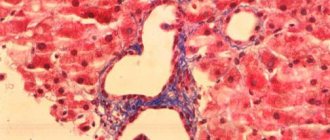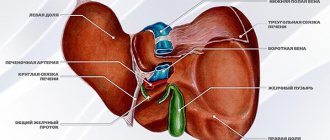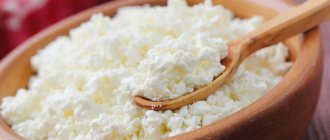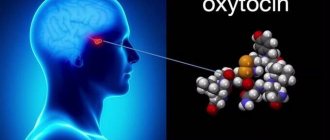Hydrochloric acid A solution of hydrogen chloride in water, which is a colorless, transparent liquid.
Due to the presence of a single element (single-compound impurity) in water, it is considered caustic due to its chemical properties. When it comes into contact with air, it emits “smoke.”
Formula HCl
Technical acid (Cl - H) has the same formula, but differs in color - due to impurities of iron and chlorine it has a yellowish tint. The concentration of the solution depends on the storage temperature, and at 20 degrees it is 38% with a density of 1.18 g/cm3. The salt of the solution is called chloride.
Alternative names
Hydrochloric acid or hydrogen chloride.
Obtaining hydrochloric acid
Hydrochloric acid is produced by dissolving hydrogen chloride gas in water. It is burned in chlorine, resulting in synthetic acid. It is also possible to obtain it from by-gases during the chlorination of hydrocarbons. In the first case, it will have fewer impurities, and the second is necessary in industry, when the demand for abgasic acid increases.
In laboratory conditions, sulfuric acid and table salt are used:
- At temperatures of 550 degrees and above, table salt produces excess.
- When carrying out the hydrolysis of magnesium and aluminum chlorides (heating the hydrated salt).
- When producing oxychlorides, when the salts are incompletely dissolved (the reaction is not completed).
The higher the ambient temperature, the lower the dissolution ability. Therefore, in practice, 36% acid is used, although at 0-1 degrees oxygen will absorb more than half of the impurities, which is equal to 45% acid.
Physical properties
Hydrochloric acid is a clear, colorless liquid with a characteristic pungent odor.
Formed when hydrogen chloride is passed through water. It also participates in reactions in the liquid state. It dissolves well in water, i.e. mixes with it. Industrially produced hydrochloric acid is slightly yellow in color due to elemental impurities. Concentrated acid, like hydrogen chloride, “smoke” in moist air. A molecular crystal lattice, in the nodes of which there are HCl molecules, in the molecule there is a covalent polar bond.
Properties of hydrochloric acid
Physical properties
The physical properties of the acid depend on the degree of concentration of dissolved hydrogen chloride. With an increase, the following is observed: • An increase in the density of the solution; • Increase in molarity; • Decrease in pH value; • Increasing the viscosity of the substance; • Reduced specific heat capacity; • Increase in steam pressure; • Decrease in boiling point; • Melting temperature variations.
The latter change as follows: at minimum and maximum concentrations, melting reaches maximum values. The average concentration can be melted at minimum temperatures. The solidified substance gives crystalline hydrates - HCl H2O, HCl 6H2O, HCl 3H2O, HCl 2H2O.
Chemical properties
- Interacts with metals (Me) electrochemical potentials:
Mg+2HCl = MgCl2+H2.
A salt is formed with the release of hydrogen.
- Interacts with Me oxides:
Na2O+2HCl = 2NaCl+H2O
with the formation of salt and water.
- Neutralization reaction with Me hydroxides:
NaOH+HCl = NaCl+H2O
with the formation of soluble salt and water.
It also reacts with Me salts, oxidizing agents to release chlorine gas and ammonia to release thick white smoke from ammonium chloride crystals.
Receipt
Alchemists called S. k. murieva (from the Latin muria - brine, brine) and obtained it by calcining table salt with vitriol. All R. 17th century I. Glauber proposed a method for obtaining concentrates. S. to. heating table salt with sulfuric acid. S. k. became widely available in the 19th century. in connection with the development by N. Leblanc of a method for producing soda, in which hydrogen chloride was a by-product. Modern The production of S. to. (synthetic, gas-free, reactive) consists in the absorption of HCl by water. Depending on the method of removal of absorption heat, processes are divided into isothermal, adiabatic and combined.
At isothermal The absorption process is carried out with heat removal, and the acid temperature is maintained constant due to direct cooling of the absorber or due to cooling of the circulating acid in an external refrigerator. In this case, it is theoretically possible to obtain S. K. of any concentration, since with a decrease in temperature, the partial pressure of HCl above S. K. Isothermic also decreases. absorption should be used to obtain concentrates. S. to. (35–38%) and for processing low concentration hydrogen chloride. In the latter case, when the reaction gases contain St. 40% of impurities (nitrogen, hydrogen, methane, etc.) absorption in isothermal. conditions is impractical due to deterioration of heat transfer and reduction in the completeness of absorption. Isothermal absorption can be carried out in surface absorbers - the gas passes over the surface of a stationary or slowly flowing liquid. Such absorbers are used only for relatively small scale production. Usually a cascade of absorbers is installed.
At adiabatic The absorption process is carried out without heat removal. S. K. is heated to a boil due to the heat of dissolution of hydrogen chloride. At the same time, the vapor pressure of the water increases and intense evaporation of water begins. The latter causes a decrease in the temperature of the boiling acid and an increase in the concentration of acid. The absorption temperature is determined by the boiling point of acid of the corresponding concentration. The source gas containing HCl is introduced from the bottom into the column; an absorbent (usually water) flows in countercurrent to it. Instead of water or together with water, diluted acid can be used to irrigate the column. If the absorbent is an acid, the efficiency of HCl absorption decreases and amounts to 95–99%, depending on the concentration of the acid and the vapor pressure of HCl. If the absorbent is water, HCl can be completely absorbed. The concentration of HCl in the liquid increases in the direction from the top of the column to the bottom.
Combined the absorption scheme consists of adiabatic. and isothermal stages varying depending on the power, composition of the reaction gas and other conditions.
Synthetic S. is produced from HCl obtained by the interaction of H2 and Cl2. To obtain reactive S. to. (grades “pure”, “analytical grade”, “reagent grade” with a concentration of 35–38%) use HCl obtained from evaporated chlorine and electrolytic. hydrogen in graphite furnaces followed by isothermal. absorption with distilled water in graphite absorbers. Most of the sulfur complexes are produced from HCl contained in the waste gases (“waste gases”) of the processes of chlorination, dehydrochlorination, pyrolysis of chlorine-containing compounds, the production of metal chlorides, etc. Abgasnaya sulfur complexes, as a rule, contain impurities: chlorine, organochlorine. compounds, acids, alcohols, aldehydes, etc. To purify exhaust gases, the following is used: stripping with an inert gas (HCl, air, nitrogen, methane, etc.); stripping, in which the acid concentration is reduced by 1–2%; pre-washing of gas-absorbing S. to., during which water-soluble impurities are dissolved; sorption methods, etc. World production of S. k. approx. 20 million tons/year.
Application of hydrochloric acid
Applications are widespread in the fields of hydrometallurgy and electroforming. Metal surfaces are cleaned using acids; for the production of zinc chlorides. Sometimes technical hydrochloric acid is necessary for cleaning ceramics and metal products. For this purpose, an inhibited acid is used, intended specifically for disinfection.
In the food industry it is necessary to regulate the acidity of products. The substance is registered under the food additive code E507. Most often used in the production of seltzer water (soda).
In the pharmaceutical industry, hydrochloric acid is needed for the manufacture of drugs intended for mixture with pepsin enzymes. If there is a lack of natural acid in the gastric juice, a concentration of 0.5% is prescribed orally.
Where is it found?
You can find it in its natural form in fermented milk products. It is formed by kneading and standing yeast dough. To obtain it, fermentation of a solution of sugar and milk waste using lactic acid bacteria is used.
Product E270, actively used in the food and processing industries, is a representative of the group of carboxylic acids; it looks like a clear, sediment-free liquid, has a specific odor and a characteristic sour taste. Its presence in canned food prevents the occurrence of fermentation processes and the development of pathogenic microbes.
In living organisms, lactic acid is produced as a result of the breakdown of glucose, which is a source of energy for the functioning of muscles and the brain.
The more actively a person works, the greater the amount of it his body produces. For an adult male, the norm is considered to produce 120-150 g per day. Its excess is excreted through the kidneys.
Stomach and esophagus / The eternal struggle with acid?
Despite the fact that the main function of the stomach is the mechanical processing of food, there are still additional ones. Including the release of hydrochloric acid and gastric juice. Acid performs one of the very important functions - neutralizing food entering the body from microbes. Hydrochloric acid, which is secreted by the stomach, can kill 85-95% of all bacteria ingested with food. It is thanks to her that we do not experience daily esophageal poisoning.
In addition, acid prepares the most difficult foods to digest - proteins - for digestion. They must be broken down into small pieces, amino acids, in order to enter the body. Hydrochloric acid unwinds the complex structure of the protein molecule so that enzymes in the intestine can cut the protein.
Acid is secreted by special cells located in the wall of the stomach, they are called chief cells or parietal cells. Each such cell has a special acid pump. It pumps hydrogen ions into the stomach, where they combine with chlorine ions to form hydrochloric acid.
The acid pump can be started by different “buttons”, all of them are activated by different substances. For example, there is a histamine button, a somatostatin button, an acetylcholine button - after the name of the substances that trigger the production of hydrochloric acid. These buttons are affected by many medications that block the release of acid in the stomach. But each method has its own characteristics, for example, for different diseases, or when we take different pills. In addition, nerve fibers are connected to the acid secretors, which, based on a signal “from above,” can also influence the secretion of acid in the stomach.
Many people are very interested in when is the right time to drink water, and what happens when we drink water while eating. Some believe that this dilutes or dilutes the gastric juices and reduces acidity. This opinion is partly correct, but not completely.
The fact is that the stomach secretes a certain amount of hydrochloric acid. The amount of acid depends on the volume of food. Normally, there is a direct regulatory relationship between the amount of food that passes through the mouth and esophagus into the stomach and the exact corresponding amount of acid. The more you ate, the more acid the stomach released, and vice versa, the less you ate, the less acid the stomach released.
If we add water or other liquid to the stomach, the amount of acid released will not change. Using conventional figures as an example, we ate 500 g of food and this produced 100 g of acid. We added water, the acid was 100 g, and 100 g remained. Yes, it became a little more diluted, but this does not affect digestion in any way. Firstly, because nothing is digested in the stomach, it happens a little further. Secondly, in a larger volume, the acid processes the contents faster. Thirdly, more liquid contents will leave the stomach faster and begin to be digested faster.
Many people, when they experience discomfort in the stomach or heartburn, begin to take some medications or folk remedies on their own. There's really nothing wrong with them doing it on their own, as long as it's not thoughtless! You need to understand at least a little what happens in the stomach.
Some folk remedies are simply alkali, which neutralizes some of the acid in the stomach. At first glance, it becomes easier, but if not all the acid is removed during inflammation, then it is impossible to recover. And if you remove all the acid with a reserve, then the same inflammation can also be intensified with alkali or, for example, soda. Be careful.
Many medications, in fact, just need to be taken correctly and stopped correctly. Some people still use old drugs, which develop a so-called “escape” effect, that is, the drug helps at first. And then it stops helping. Others experience rebound syndrome, where symptoms begin again immediately after stopping the pills. All these difficulties on the path to a complete cure can be easily overcome if you know about them and know what to do about it. Unfortunately, not everyone knows, so they suffer with sores for a long time, if not for life.
If your stomach produces little acid, you probably won't know or think about it. Because the decrease in the amount of acid does not cause any symptoms and occurs gradually and imperceptibly. The only problem is that over time, the mucous membrane in the stomach becomes weak, thin, atrophy, metaplasia and dysplasia develop in it, and in the end this leads to stomach cancer.
It is important to know that the amount of acid becomes not so much less and this is not so important compared to the number of cells themselves that secrete it. When a diagnosis is carried out, you need to look at the examination results to see what the severity of this atrophy is, and whether it exists at all. If there is, then the treatment methods are completely different and fundamentally different from ordinary gastritis, then the treatment does not help.
We must try to prevent the last stage and gradually restore the condition of the stomach. Unfortunately, it turns out that we are all diagnosed with gastritis, and they do not indicate what kind, whether there is atrophy or not. As a result, we end up with less than effective treatments prescribed blindly, or a constant recurrence of symptoms that should have been taken and treated.
You cannot tolerate stomach symptoms if they become regular or appear more than once a week. Contrary to the belief that everyone has gastritis, I hasten to inform you that this is not so. Gastritis is an inflammation of the stomach that just needs to be taken and cured. But until the end! So that it doesn't come back again. Since our country has certain problems with the organization of healthcare, we created this project in the hope of correcting the situation.
More articles
Next article
Gastric acidity
Such an important aspect as the pH of the stomach directly depends on hydrochloric acid. And if there is a deviation from the norm, gastritis, dyspeptic disorders and other unpleasant conditions occur. Acidity in the stomach can be low, normal or high.
Despite the “popularity” of increased pH, people often have low or normal acidity. The latter ranges from 0.8 to 1.5.
Low stomach acidity
Low acidity occurs with constant stress and inflammatory diseases. This happens due to the stimulation of the sympathetic nervous system, which directly affects the production of gastric juice. A decrease in acidity leads to worse digestion of food and stomach spasms. Food remains in the cavity and begins to rot, increasing the proliferation of pathogenic bacteria. A person suffers from flatulence and nausea. The latter is a response to stomach spasms. Moreover, the process of absorption of all nutrients contained in our food is actively disrupted, which leads to disruption of the functioning of the entire body. By the way, it is precisely because of the natural decrease in pH that after 40 years a person begins to age rapidly. That is, hydrochloric acid in the stomach actually affects the health of the entire body.
The stomach, surprised by the excessive proliferation of bacteria, begins to turn on its protective function, resulting in inflammation. It is treated with drugs that further inhibit the production of hydrochloric acid - and the circle closes. A person is forced to constantly visit a doctor.
Even heartburn, which we are accustomed to considering as a consequence of an increase in the amount of gastric juice, is considered only a product of acetic acid fermentation.
In a diseased stomach, lactic acid begins to actively form. Due to the inability of the stomach to produce enough mucus, it damages the walls of the organ. In such cases, a diagnosis of gastroduodenitis is made.
Proteins and acidity of gastric juice
The role of hydrochloric acid in the digestion of proteins is still unclear. However, it has been established that with inflammatory diseases of the stomach, its secretion and, as a consequence, the digestion of proteins are disrupted.
The importance of proteins in our body can hardly be overestimated. This group is divided into many subgroups, each of which does its own thing. Thus, hormone proteins control life processes (growth and reproduction), enzyme proteins provide chemical processes (respiration, digestion, metabolism), hemoglobin saturates cells with oxygen.
Denaturation of proteins (this facilitates the process of their subsequent breakdown) allows the body to use their properties to the maximum. Every protein is made up of amino acids. Most of them are synthesized by our body, but there is a group of so-called essential amino acids that enter the body only from the outside.
Application
S. to. is used for the production of metal chlorides, metal etching. surfaces, cleaning the surfaces of vessels, oil and gas wells from carbonates, ore processing, during the production of organic. products, etc. In honey. In practice, diluted S. to. is used for diseases associated with insufficient acidity of gastric juice.
Concentrated S. to. causes severe burns of the mucous membranes and destroys teeth.
First aid and emergency therapy
In case of inhalation poisoning, the victim must be immediately taken out into fresh air and given oxygen inhalation. The throat should be rinsed with 2% sodium bicarbonate solution, and the eyes and nose should be rinsed with the same solution. If there is difficulty breathing, instill 4-5 drops of 2-3% ephedrine solution into the nose 3-4 times a day, and inject 1 ml of 0.1% atropine solution subcutaneously. In severe cases of S. aerosol poisoning, inhalation of antibiotic aerosols is used for the prevention and treatment of pneumonia, and a course of treatment with antibiotics and sulfonamides is prescribed.
If a high concentration of S. comes into contact with the skin, it is necessary to immediately wash the skin with water for 5-10 minutes. (preferably 2-4% sodium bicarbonate solution); further treatment is symptomatic (see Burns).
In case of eye damage, after washing with sodium bicarbonate solution, 1 drop of 2% novocaine solution or 0.5% dicaine solution with adrenaline (1:1,000) is instilled into the eyes, then sterile vaseline or peach oil is placed in the conjunctival sac . Subsequent treatment consists of instilling 30% Albucid solution into the eyes and using hydrocortisone eye ointment.
In case of oral poisoning, it is necessary to urgently rinse the stomach through a tube with water and then carry out symptomatic treatment (see Poisoning).










